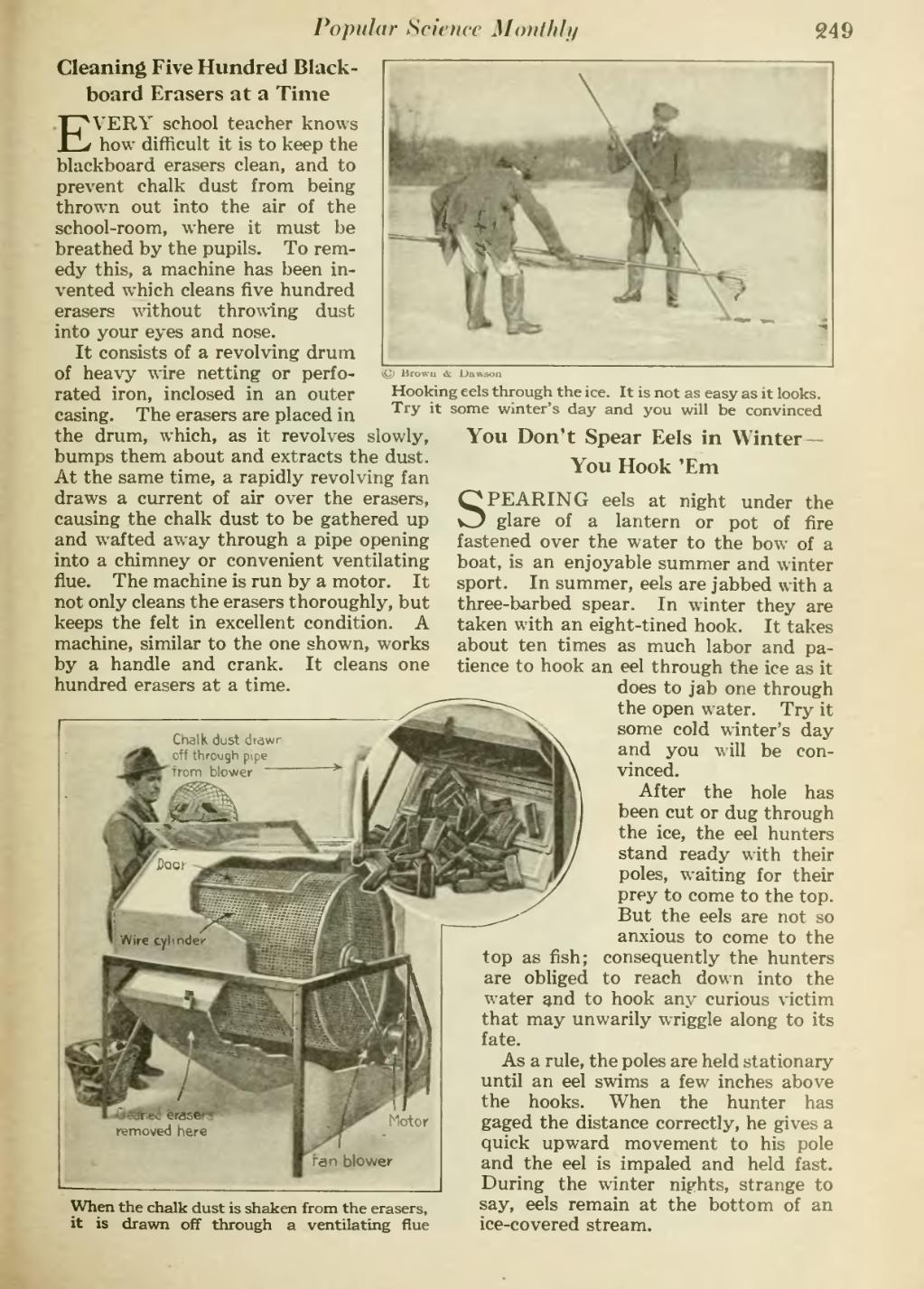Popular Science Monthhf
��249
��Cleaning Five Hundred Black- board Erasers at a Time
EVERY school teacher knows how difficult it is to keep the blackboard erasers clean, and to prevent chalk dust from being thrown out into the air of the school-room, where it must be breathed by the pupils. To rem- edy this, a machine has been in- vented which cleans five hundred erasers without throwing dust into your eyes and nose.
It consists of a revolving drum of hea\'y %\-ire netting or perfo- rated iron, inclosed in an outer casing. The erasers are placed in the drum, which, as it revolves slowly, bumps them about and extracts the dust. At the same time, a rapidly revolving fan draws a current of air over the erasers, causing the chalk dust to be gathered up and wafted away through a pipe opening into a chimney or convenient ventilating flue. The machine is run by a motor. It not only cleans the erasers thoroughly, but keeps the felt in excellent condition. A machine, similar to the one shown, works by a handle and crank. It cleans one hundred erasers at a time.
�� ���When the chalk dust is shaken from the erasers, it is drawn off through a ventilating flue
��Hooking eels through the ice. It is not as easy as it looks. Try it some winter's day and you will be convinced
You Don't Spear Eels in Winter— You Hook 'Em
SPEARING eels at night under the glare of a lantern or pot of fire fastened over the water to the bow of a boat, is an enjoyable summer and winter sport. In summer, eels are jabbed with a three-barbed spear. In winter they are taken with an eight-tined hook. It takes about ten times as much labor and pa- tience to hook an eel through the ice as it does to jab one through the open water. Try it some cold winter's day and you will be con- vinced.
After the hole has
been cut or dug through
the ice, the eel hunters
stand ready with their
poles, waiting for their
prey to come to the top.
But the eels are not so
anxious to come to the
consequently the hunters
to reach down into the
water and to hook any curious victim
that may unwarily wriggle along to its
fate.
As a rule, the poles are held stationary until an eel swims a few inches above the hooks. When the hunter has gaged the distance correctly, he gives a quick upward movement to his pole and the eel is impaled and held fast. During the winter nights, strange to say, eels remain at the bottom of an ice-covered stream.
��top as fish; are obliged
�� �
